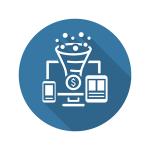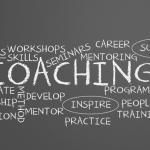The 3 Strategies That Help Develop Star Salespeople



There’s probably always a hope, at least when the employment contract is being signed, that every new hire on the sales team will turn into a star. And by “star,” we’re talking about someone who not only meets their quota, but brings in net new business, collaborates well with the marketing department and is generally so self-sufficient that they need only the most high-level management touch.

There’s probably always a hope, at least when the employment contract is being signed, that every new hire on the sales team will turn into a star. And by “star,” we’re talking about someone who not only meets their quota, but brings in net new business, collaborates well with the marketing department and is generally so self-sufficient that they need only the most high-level management touch.
Over time, of course, there are usually only a few people on any given sales team who truly stand out as stars. That may often just be the law of averages, or it could be a lack of training and ongoing support. According to a recent article in the Harvard Business Review, however, focusing on hiring sales stars can be too risky. This is in part due to the very thing that is transforming sales departments: the rise of cloud computing.
Companies that have adopted a subscription-as-service model (SaaS) are a great example. In the early years of a SaaS venture, stars typically generate the bulk of revenues, and they are often revered and feared internally for the relationships and power they wield. But, as the venture matures, and they continue to close a few big annual deals, they can limit growth since the SaaS model requires higher volumes.
Of course, moving to SaaS for sales is a smart move for most Canadian SMBs, if not an inevitable one. That’s why the HBR authors argue that scaling sales with SaaS involves making sure processes are clearly defined and understood. Making use of data is critical, as is putting resources into sales that support the target buying process.
Right now, many companies are probably trying to fix current sales processes as SaaS is more widely deployed. One of the advantages of being an SMB is the ability to develop good ways of hiring and developing sales staff as SaaS becomes the default selling tool. Here are a few ideas:
Develop A Sales Star Persona
Many firms have already done an exercise as part their marketing strategy to create a persona or set of personas about their desired customer. These could be basic bullet points of common needs and buying habits. In other cases, they can be remarkably detailed character sketches with age, gender, hobbies and other interest all woven in. The point is that the more such personas are considered at the start of sales and marketing activities, the more successful the results will be.
Why not do the same thing for your ideal sales star — not just sales stars in general, but a sales star that operates in a SaaS environment? To get the brainstorming process going, there’s probably nothing better than a post from Sales That Work blogger Wendy Connick, who itemizes a list of standard characteristics that tend to make certain sales people stand out. Her persona is pretty specific: she says star sales people are organized, have a plan of attack for each customer conversation, do their homework and, perhaps most critically, make themselves available:
“A salesperson who vanishes the second the deal closes is doing both the customer and himself a disservice. Star salespeople know that when they close the sale, it’s just the start of their relationship with that customer,” she writes. “They make it easy for customers to reach them with any questions or concerns, follow up on a regular basis, and continue to develop the business relationship between themselves and their customers over time.”
This brings up something worth considering as you develop your entire sales team: Are they ready to work not only in a SaaS world but a mobile one? As smartphones increasingly become the hub for most business activity, making themselves available will mean being as well-versed in using mobile apps as it does making calls.
Watch For Online As Well As Offline Behaviour During Interviews
Dave Khale knows a star sales person when he sees one. That’s why, in a blog post last month, the U.S.-based sales trainer offered a six-part series that discussed the various ways star sales people tend to act. Though it might seem obvious, he suggests ensuring potential hires demonstrate the kind of emotional intelligence that will build successful rapport with prospects and clients.
“I often have eliminated prospective sales people during an interview when they interrupted me too many times, or weren’t sensitive to what I was communicating to them during the interview,” he said. “If they weren’t good at building a relationship with me, they certainly were not going to be able to build relationships with customers.”
Here’s a less-obvious take on Khale’s observation: how can a potential sales star demonstrate empathy and build relationships outside of an in-person conversation? This could include the way they conduct conversations on social media, how they participate in online customer service communities, or even the kind of details about customer pain points they put into CRM. Ensure as new hires are brought on that you have a solid sense of their degree of experience with these digital tools. You can still turn online neophytes into sales stars, but it may take more training and time.
Rethink Your Sales Reward System
It may seem like a long time ago, but back in 2009 Dan Kleinman was addressing similar talent issues with his book All Star Sales Teams. What he wrote them makes even more sense in a SaaS-based world:
“Good sales people expect a reward system to align with the realities of their environment, to focus on key deliverables and to generate enthusiasm,” he said.
Working with cloud computing tools may require different processes, so perhaps some of the rewards should morph as well. This might mean incentives that not only recognize customer wins, but the information shared in CRM that benefits the organization as a whole. It could mean rewarding behaviour that not only helps a firm reach its goal for the quarter, but the use of data that gives the firm an edge for the entire year. The more creative and relevant these rewards are, the more likely you’ll be seeing stars —otherwise known as high-performing employees across your entire team.
Do you want more tips to increase your sales performance? Check out Salesforce’s free eBook:























